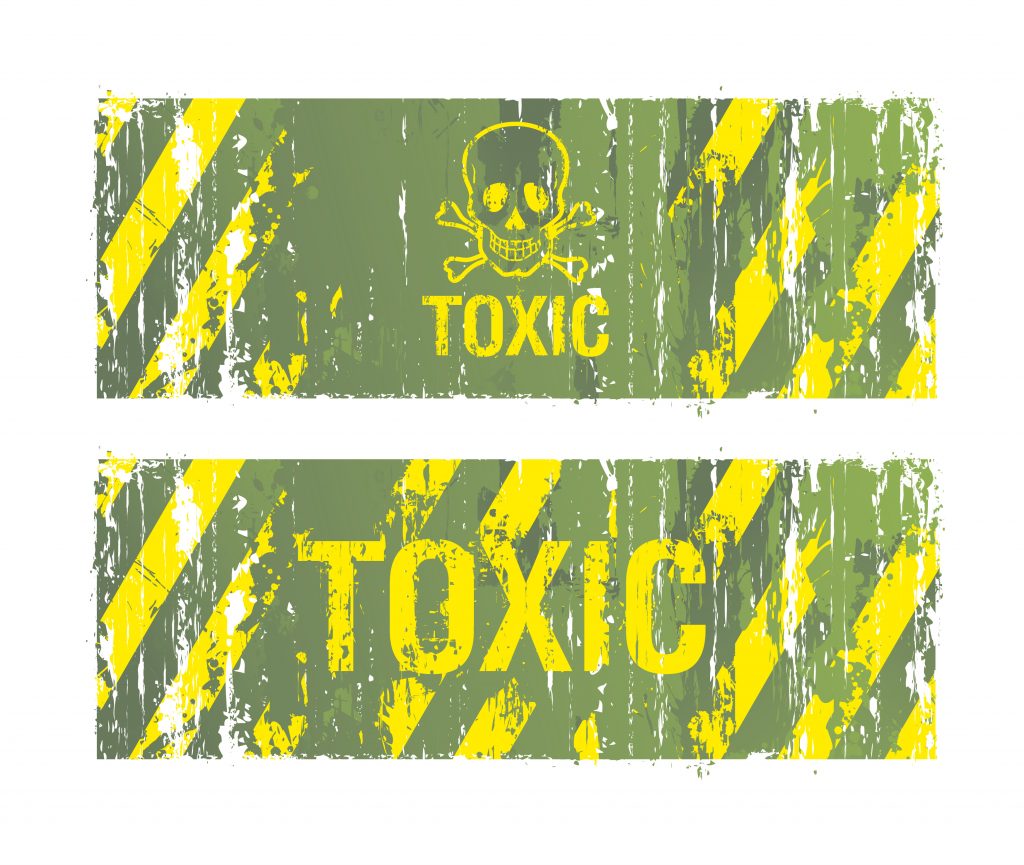Amyotrophic Lateral Sclerosis (ALS) is a progressive neurodegenerative disease that affects the brain and spinal cord nerve cells. The name stems from the Greek language. “A” translates to no, “Myo” implies muscle, and “Trophic” is nourishment. During lack of muscular nourishment, the muscle begins to atrophy or waste away. Lateral signifies the areas in the people with ALS spinal cord where segments of nerve cells that control the muscles by sending signals are located. The condition causes degeneration, leading to sclerosis (hardening or scarring) of the area. (ALS Association,2021)
The Role of Environmental Toxins in ALS

A scientific study investigated the role of exposure to toxins within the workplace in the development of Amyotrophic Lateral Sclerosis in workers. The study examined “109 cases 253 controls who completed a structured interview covering occupations and workplace exposures. (Fang et al.,2009).”
According to the study results, construction workers and metal workers are at a higher risk for ALS, though supervisors showed no increased risk. An association of a 60-90% higher risk for developing ALS correlated to exposure to the following chemicals:
- Paint Strippers
- Cutting Lubricant,
- Cooling Lubricants
- Lubricating Oils
- Antifreeze
- Coolants
- Mineral or White Spirits
- Dry Cleaning Agents
This list is alarming, considering that most of these chemicals arrive packaged with little warning of potential risks. Many occupations rely on the regular use of the substances above. The need to support one’s family negates the possibility of objecting to their use or turning to another profession.
Lead as a Risk for ALS
Another study examined the role of lead exposure in the development of ALS. The study confirmed an associated risk between self-reported lead exposure and the development of ALS.
The following information from the CDC and the National Institute for Occupational Safety and Health (NIOSH) lists the occupations at “risk of lead exposure:
- Artists (materials used may contain lead)
- Auto repairers (car parts may contain lead)
- Battery manufacturers (batteries contain lead)
- Bridge reconstruction workers (old paint may contain lead)
- Construction workers (materials used may include lead)
- Firing range instructors and gunsmiths (ammunition contains lead)
- Glass manufacturers (lead may be used in glass production)
- Lead manufacturers
- Lead miners
- Lead refiners
- Lead smelters
- Manufacturers of bullets, ceramics, and electrical components (all contain lead)
- Painters (old paint and commercial paint may contain lead)
- Plastic manufacturers (materials made may contain lead)
- Plumbers and pipefitters (pipes may contain lead)
- Police officers (ammunition contains lead)
- Radiator repairers (radiators may contain lead)
- Recyclers of metal, electronics, and batteries (may contain lead)
- Rubber product manufacturers (process contains lead)
- Shipbuilders (materials used may include lead)
- Solid waste incinerator operators (waste may contain lead)
- Steel welder (galvanized steel is coated in part with lead)(CDC,2018).”
 As you can see, the list is exhaustive. Given the significant number of environmental toxins many workers are regularly exposed to, and the confirmed higher risk of ALS given exposure, it is shocking that only two in 100,000 people develop ALS.
As you can see, the list is exhaustive. Given the significant number of environmental toxins many workers are regularly exposed to, and the confirmed higher risk of ALS given exposure, it is shocking that only two in 100,000 people develop ALS.
If we, as a society, are to reduce the rate of disease caused by environmental toxins, we will need to begin demanding a reduction in toxins within our environment. Environmental toxins harm the biosphere on a grand scale, poisoning water, land, animals, and humans. Sadly, our economic system is supported by professions interdependent on toxic chemicals, and a radical systemic change must occur before a reduction of toxins occurs. The first step is getting society to acknowledge the problem through awareness. It is our hope that this article will serve as an essential step toward that end.
Fang F, et al, Workplace exposures and the risk of amyotrophic lateral sclerosis, Environ Health Persp, 117:1387-92, 2009
Homer RD, et al., Amyotrophic lateral sclerosis among 1991 Gulf War veterans: evidence for a time-limited outbreak, Neuroepidemiol 31:28-32, 2008
“Jobs That May Have Lead Exposure.” Centers for Disease Control and Prevention, Centers for Disease Control and Prevention, 18 June 2018, www.cdc.gov/niosh/topics/lead/jobs.html.
Kamel f, et al, Lead exposure as a risk factor for amyotrophic lateral sclerosis, Neurodegen Dis, 2:195-201, 2005
“What Is Als? .” The ALS Association, 26 Apr. 2021, www.als.org/understanding-als/what-is-als.
Dr. Casey Sinclair, D.C. is a leading holistic healthcare doctor trained in functional medicine. He has extended his reach around the world by co-founding Family Health Advocacy, a health advocacy group lead by doctors and health professionals providing resources and education on global health matters. He has been fortunate to act as health a consultant to some of the largest companies in North America and as a professional speaker he’s had the privilege of speaking to thousands of people. Dr. Casey is an advocate for people suffering with chronic pain and fibromyalgia and has authored a book on the subject.
